All breeds of cattle, in fact all mammals including humans, have undesirable genetic conditions. Fortunately, advances in molecular genetics have facilitated the development of DNA tests for their management. Angus Australia is at the forefront of development of strategies to manage undesirable genetic conditions and seedstock members are leading the industry with their uptake of this technology.
Arthrogryposis Multiplex (AM), Neuropathic Hydrocephalus (NH) and Contractual Arachnodactyly (CA)
How are these genetic conditions reported?
A DNA-based test has been developed that can be used to determine whether an animal is a carrier or free of the AM, NH and CA gene. It is reported in the following way, (AM status is used in this example)
- AMF Tested AM free
- AMFU Pedigree AM free
- AM__% _% probability that the animal may be an AM carrier
- AMC Tested AM-carrier
- AMA AM-Affected
For NH and CA, simply replace AM in the above table with NH/CA.
Registration certificates and the Angus Australia database will display these codes. This information can be accessed by conducting a database search at Angus Australia and clicking on the “Genetic Test Results” link on the animal details page.
What are AM, NH AND CA?
Arthrogryposis means ‘curved or hooked joints’. Multiplex indicates there are multiple abnormalities associated with the condition. Animals with the NH condition have a large head. Both AM and NH affected calves are not born alive.
Animals with the CA condition (formerly Fawn Calf Syndrome) show reducted elasticity of the connective tissue of muscles and are normally born alive.
How are the conditions inherited?
Research in the U.S. and Australia indicates that AM, NH and CA are simply inherited recessive conditions. This means that a single pair of genes controls the condition. For this mode of inheritance two copies of the undesirable gene need to be present before the condition is seen; in which case you may get a calf with AM or NH. A more common example of a trait with a simple recessive pattern of inheritance is black and red coat colour. Animals with only one copy of the undesirable gene (and one copy of the normal form of the gene), that appear normal, are known as “carriers”.
What happens when carriers are mated to other animals?
A carrier, will on average, pass the undesirable gene form to a random half (50 %) of their progeny. When a carrier bull and carrier cow is mated, there should be a 25% chance that the progeny produced will have two normal genes and so will never pass on the undesirable gene. There should be a 50% chance that the mating will produce a carrier. However, there could be a 25% chance that the progeny have two copies of the undesirable gene. Reports from breeders show lower than expected numbers of affected (dead) calves and therefore it appears that there may be some other factors influencing the percentages indicated above. This is under investigation.
- The number of reported observations of AM, NH and CA calves is very low and there is certainly no need for panic. With today’s DNA tools undesirable genetic conditions can be managed!
If animals tested free of the undesirable gene are mated to carrier animals the AM, NH or CA condition will not be expressed at all. All calves will appear normal, but approximately half (50%) could be expected to be carriers.
Implications for Commercial Producers
Your decision on what genetic condition statuses are acceptable will depend on the genetics of your cow herd, whether you have a straightbreeding or crossbreeding enterprise and whether female progeny will be breeders.
Angus Australia seedstock breeders are being proactive and transparent in managing these genetic conditions, endeavouring to provide the best information available at that point in time. The greatest risk to the commercial sector from undesirable genetic recessive conditions comes from unregistered bulls with unknown genetic background. The DNA testing that Angus Australia seedstock producers are investing in provides buyers of registered Angus bulls with unmatched quality assurance.
Clients of Te Mania Angus can contact Hamish McFarlane [email protected] or phone 03 5264 1606 to discuss the probability of Te Mania bloodlines in their herd being carriers, or visit Angus Australia for more.
Glossary
Carrier
Animals with one copy of the recessive (in this case AM or NH) gene and one copy of the normal form of the gene. The animal appears normal and is known as “a carrier”.
- For the condition to be expressed the undesirable gene needs to be present on both sides of the pedigree and both the sire and dam need to be a carrier.
- The AM and NH status of an animal is subject to change and will be reanalysed and adjusted each week as DNA test results of relatives are received.
- The greatest potential cost of recessive genetic conditions is people overreacting to them. The genetic lines that the genetic recessive conditions, AM and NH have been found in, are of extremely high genetic merit.
DNA
Deoxyribonucleic acid. DNA is a complex molecule that forms the genetic code of all living things.
Gene
Genes are the basic unit of inheritance. They influence characteristics of many animals eg colour, weight and carcase quality.
Putting Undesirable Genetic Recessive Conditions in Perspective
– Angus Australia




